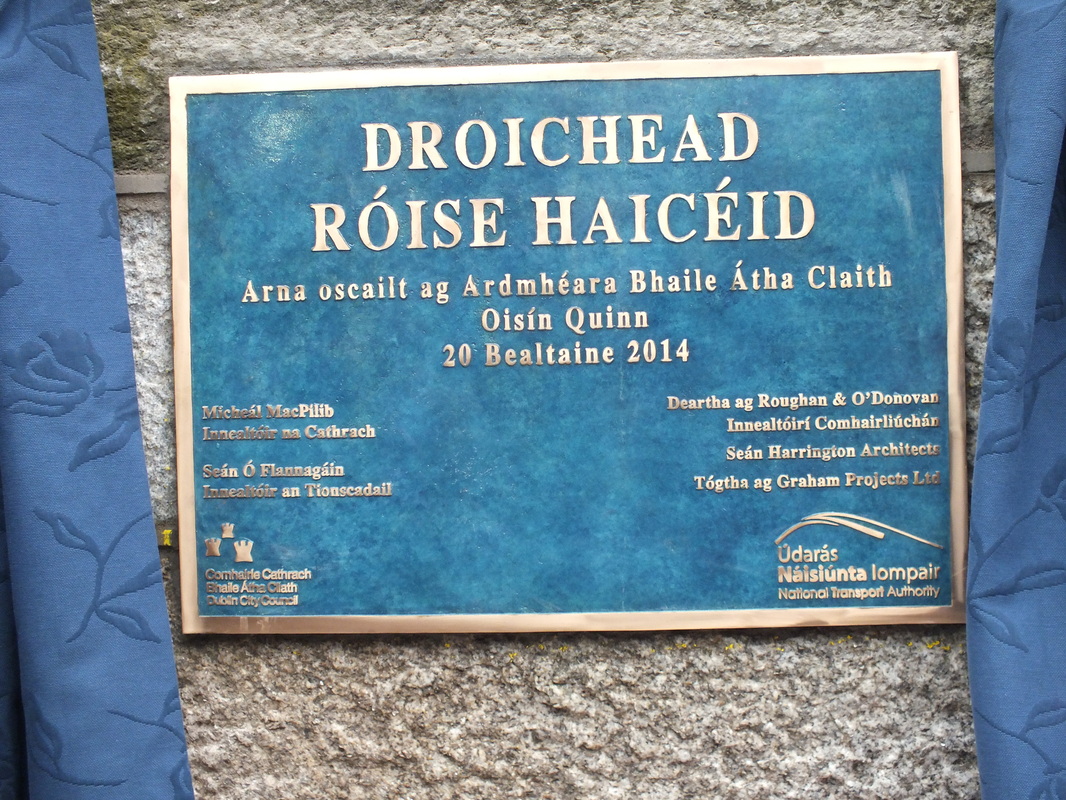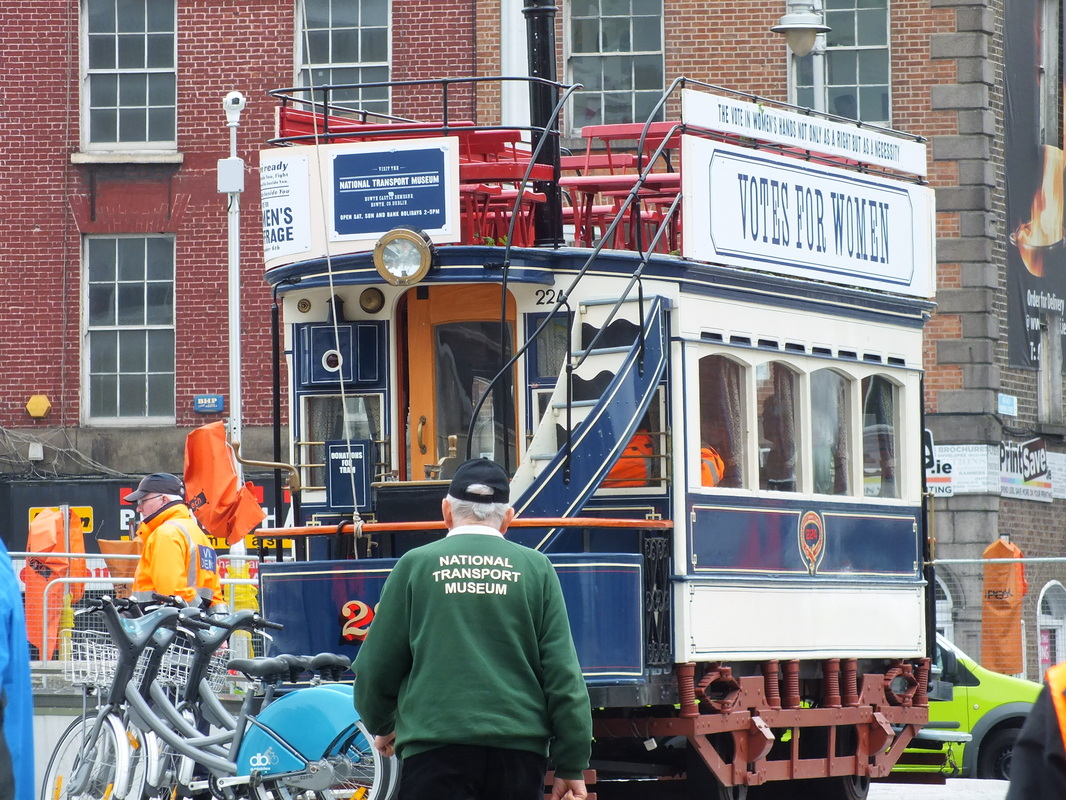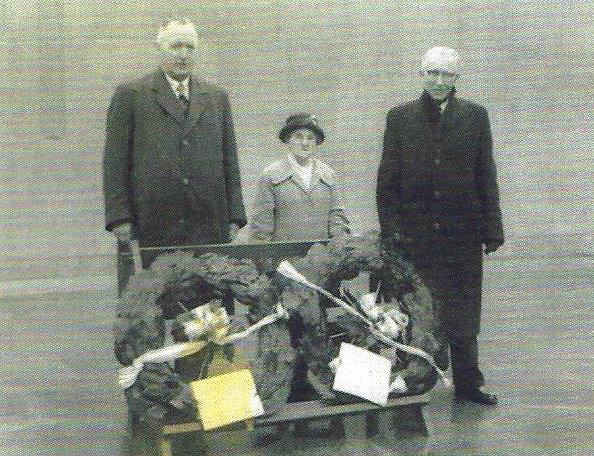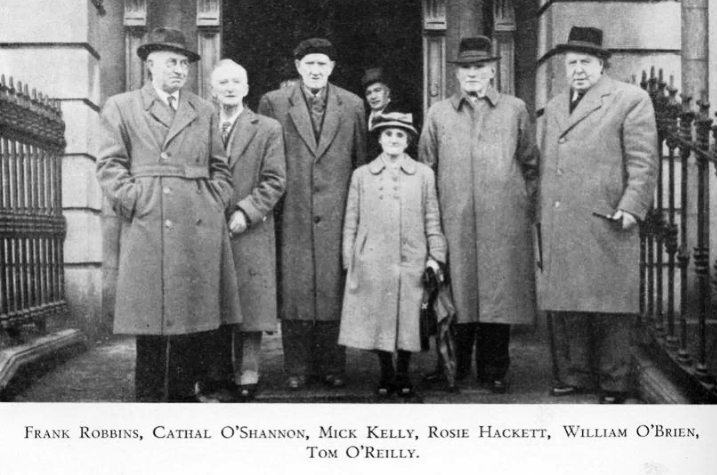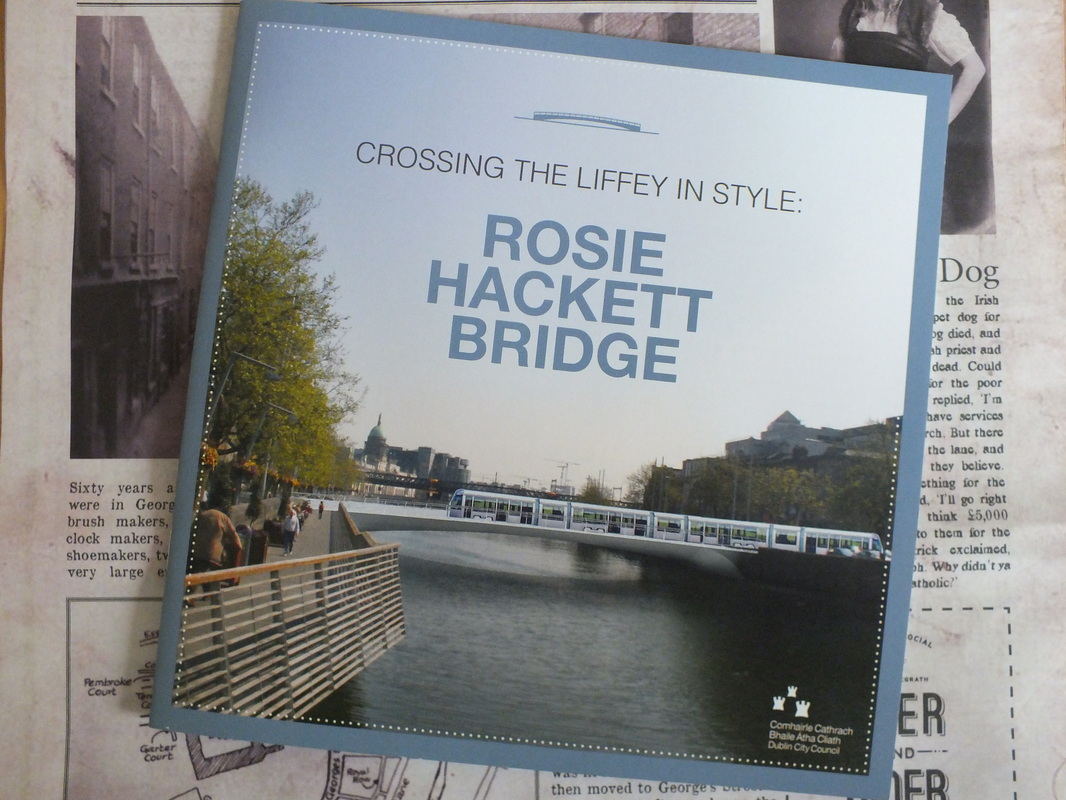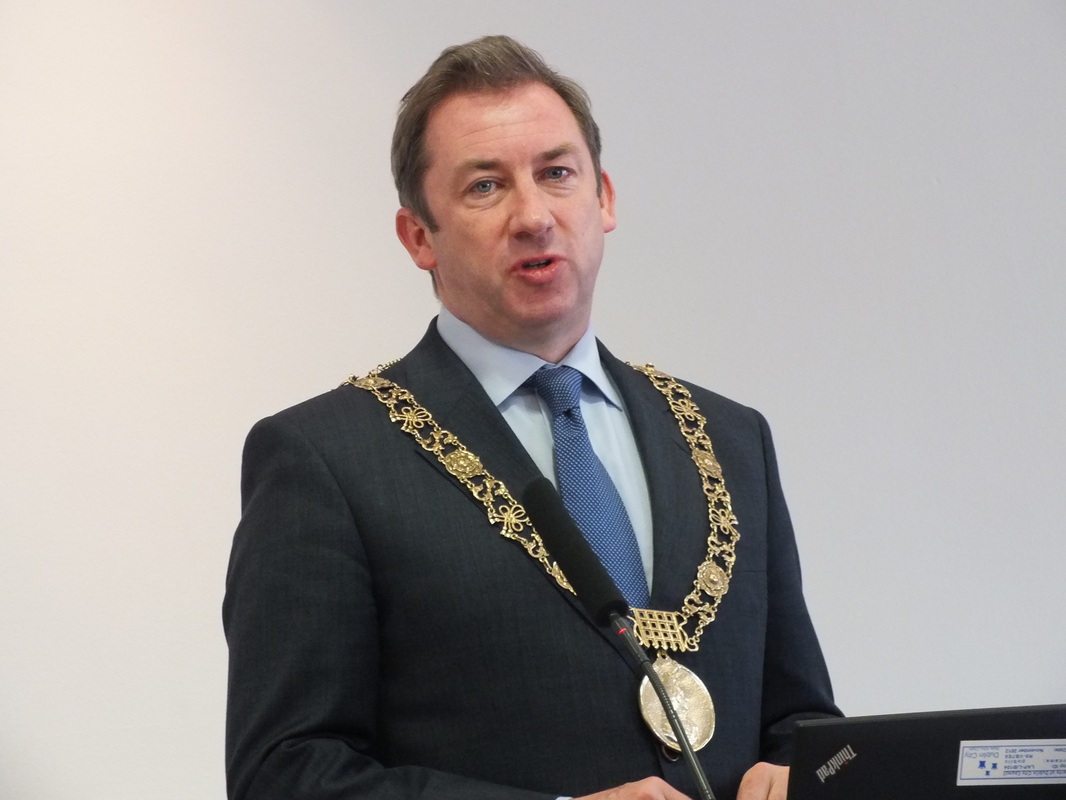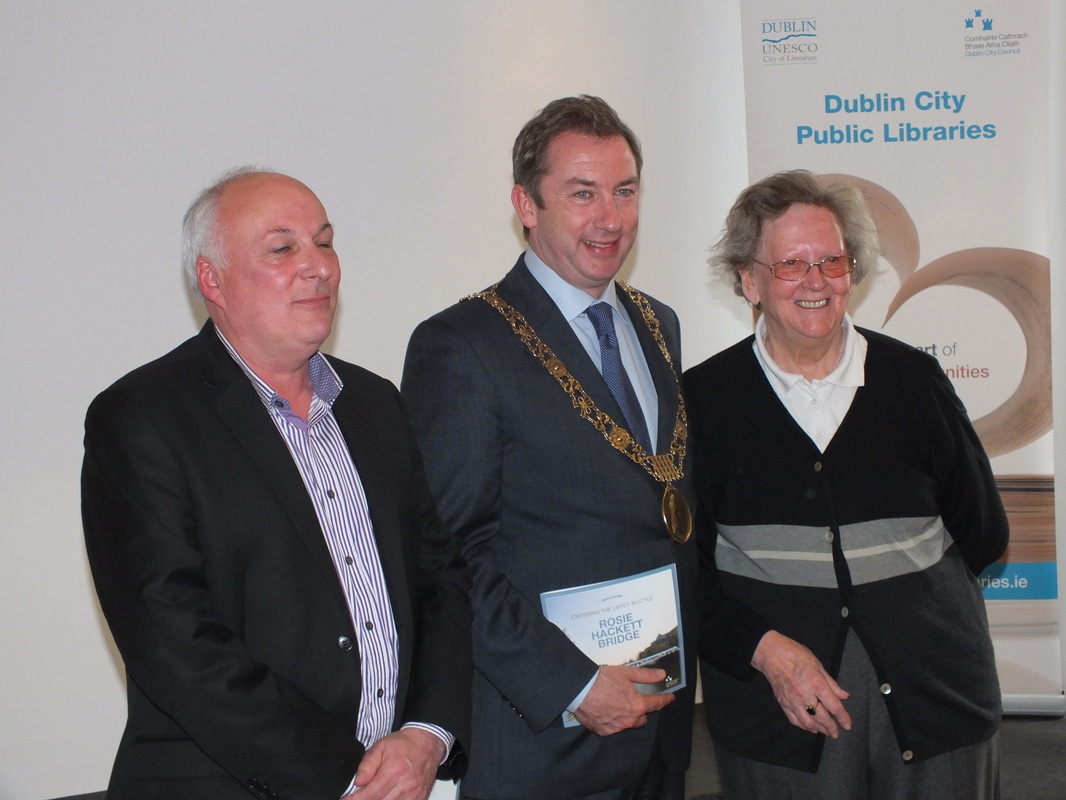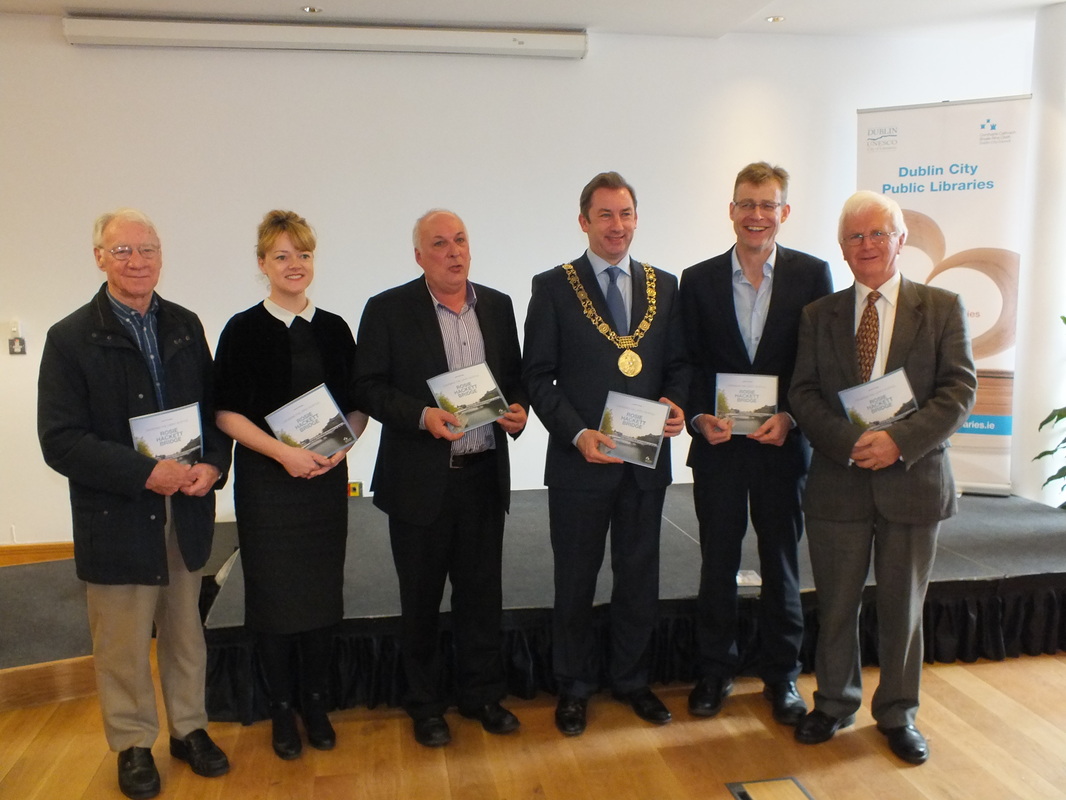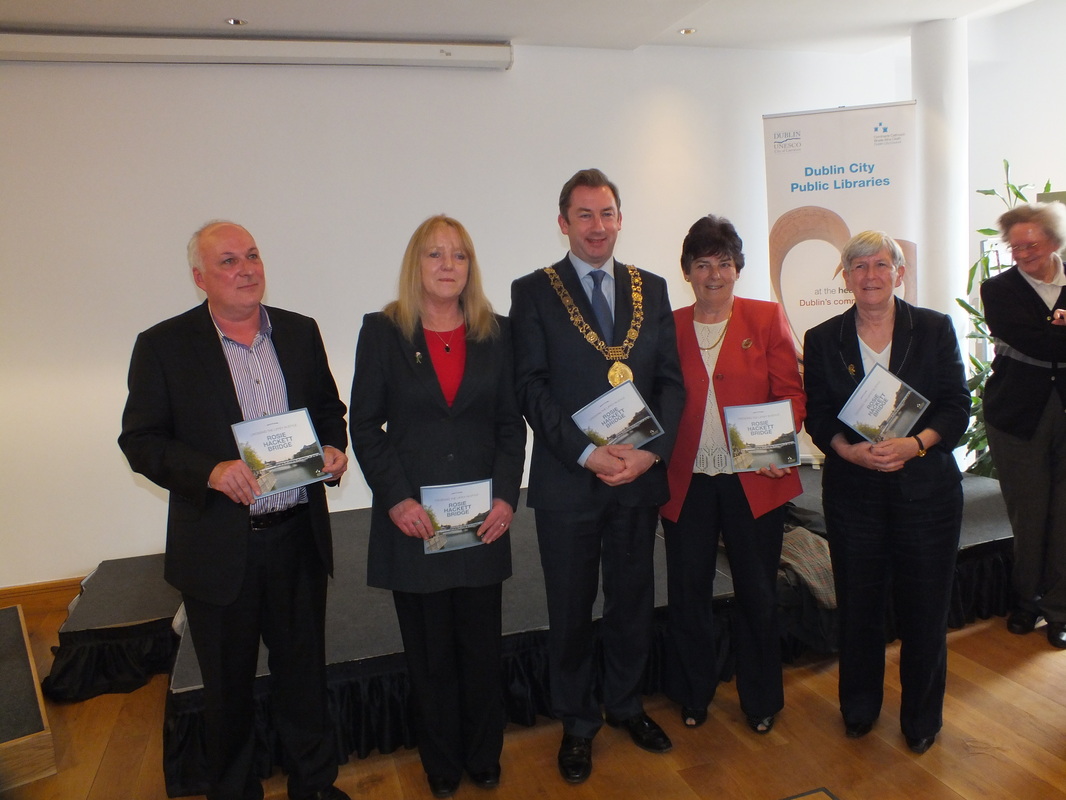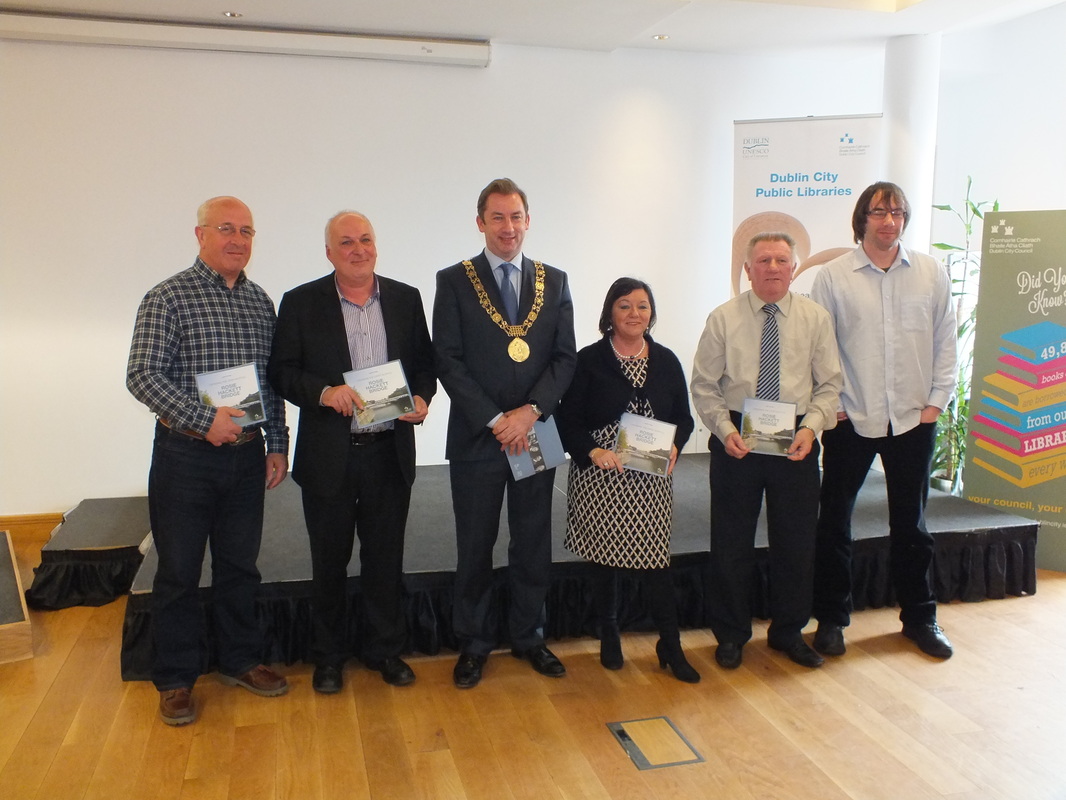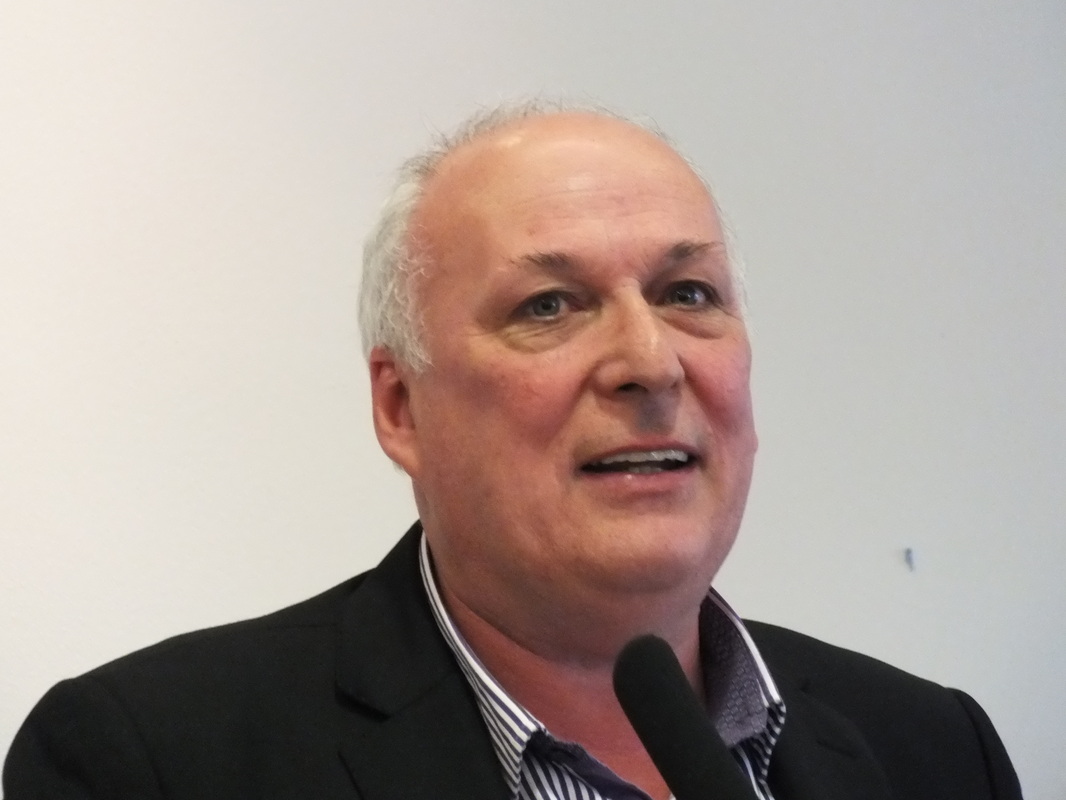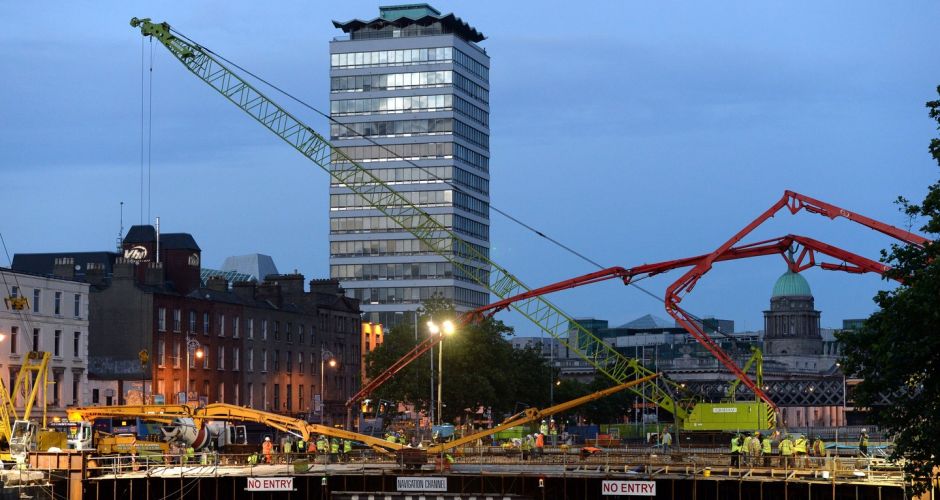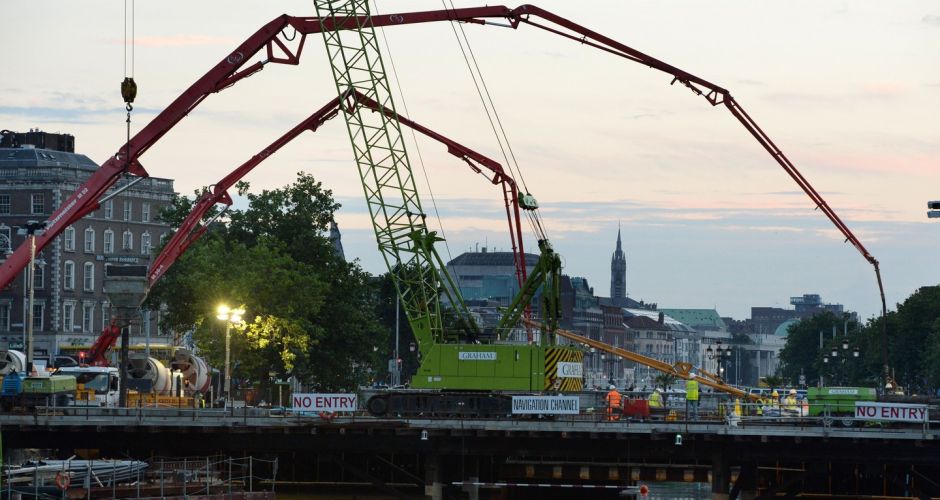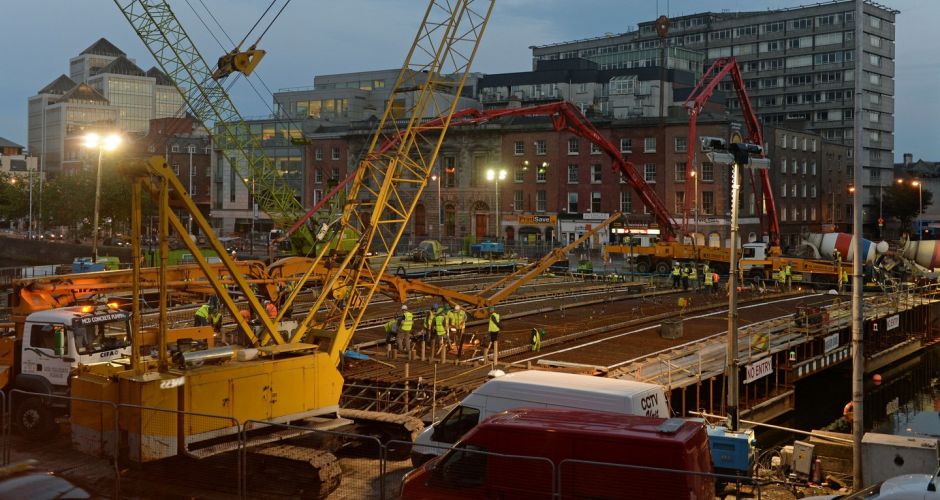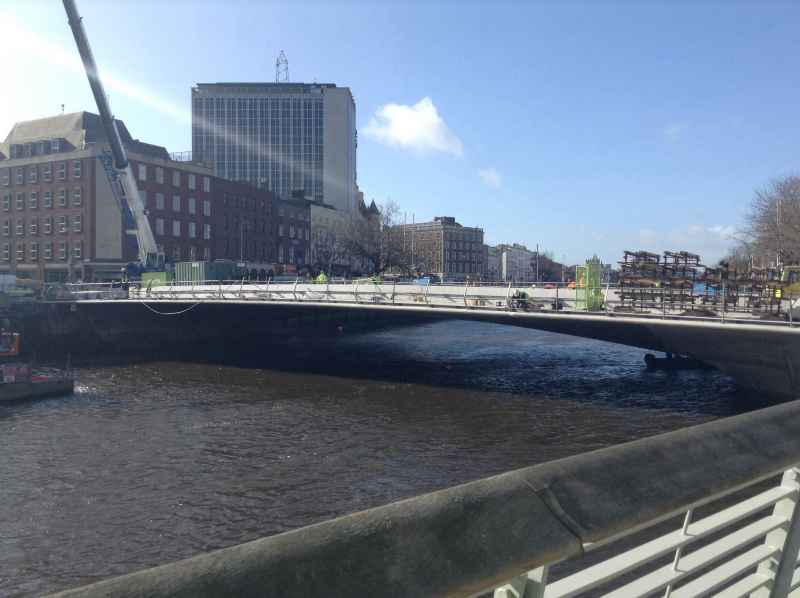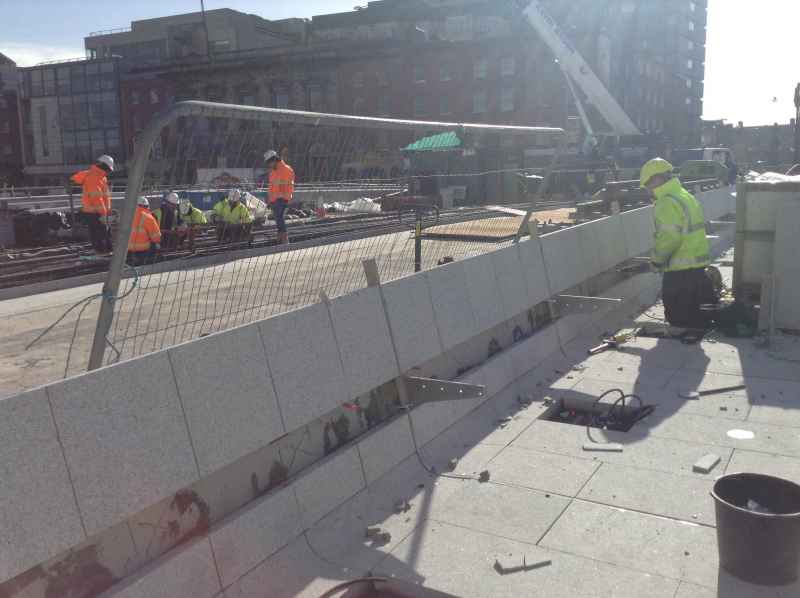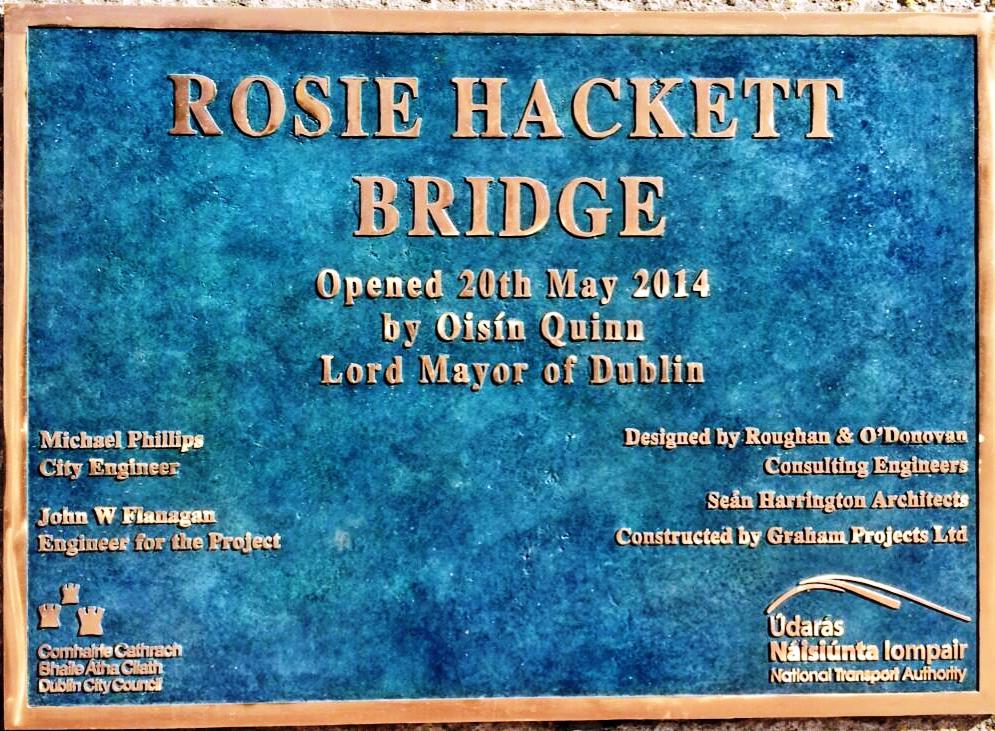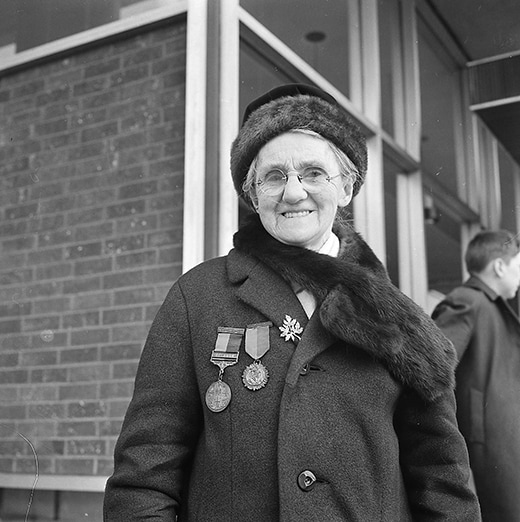"WHATS THE RACKET ABOUT ROSIE HACKETT"?
ROSIE HACKETT LIFFEY BRIDGE DUBLIN.
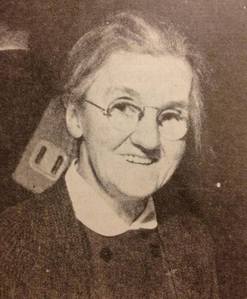
Who was Rosie Hackett.
Rosie Hackett christened ‘Rosanna’, was born in Dublin in 1892, in a tenement building in Bolton Street. Her father died when she was young, her mother remarried in 1911 and moved to Abbey Street. At the time of the 1911 census Rosie live in Abbey Street with her mother, stepfather, sister, stepsister and a lodger.
Rosie worked at the Jacob’s Biscuit factory in Bishop Street, the working conditions were terrible. In August 1911 at 18 years old Rosie became active in organising the 3000 strong women workforce working in the factory. They were successful in obtaining better working conditions and an increase in pay through withdrawal of their labour.
In 1909 the Irish Transport and General Workers Union was founded two weeks after the famous Jacobs strike. Rosie co founded the Irish Women Workers Union (IWWU), along with Delia Larkin.
In 1913 when the tram workers went on strike against their employers which was the start of the Dublin Lockout, she helped to organise the women in Jacobs to strike in solidarity. At that time in Dublin poverty and hunger was widespread, Rosie worked with the women of the IWWU in setting up soup kitchens at Liberty Hall and provided basic food parcels to assist the needy of Dublin.
For Rosie’s part in the Lockout in 1914 she lost her job at Jacobs Biscuit factory, she then worked alongside Delia Larkin at the IWWU as a clerk in Liberty Hall. While working at Liberty Hall she became involved in the Irish Citizen Army. Rosie was with Constance Markievicz and Michael Mallon when they occupied the Royal College of Surgeons Stephen’s Green during the Easter Rising. She was captured and brought to Kilmainham Jail were she was held for ten days and then freed on general release.
Rosie was also involved in the printing the original 1916 Proclamation when she handed it to James Connolly it was wet off the press. She later recounted how the men with Connolly on that occasion complained that a woman had been let into the room.
After the Rising, Rosie re-founded the IWWU with Louie Bennett and Helen Chenevix. The union grew to have 70,000 women members and was very successful in gaining an extra week paid holiday leave per year. Rosie continued her work in Liberty Hall for over 40 years.
In 1970, she was awarded a gold medal for giving 60 years of her life to the trade union movement, in 1976 Rosie Hackett passed away aged of 82 years.
Rosie Hackett christened ‘Rosanna’, was born in Dublin in 1892, in a tenement building in Bolton Street. Her father died when she was young, her mother remarried in 1911 and moved to Abbey Street. At the time of the 1911 census Rosie live in Abbey Street with her mother, stepfather, sister, stepsister and a lodger.
Rosie worked at the Jacob’s Biscuit factory in Bishop Street, the working conditions were terrible. In August 1911 at 18 years old Rosie became active in organising the 3000 strong women workforce working in the factory. They were successful in obtaining better working conditions and an increase in pay through withdrawal of their labour.
In 1909 the Irish Transport and General Workers Union was founded two weeks after the famous Jacobs strike. Rosie co founded the Irish Women Workers Union (IWWU), along with Delia Larkin.
In 1913 when the tram workers went on strike against their employers which was the start of the Dublin Lockout, she helped to organise the women in Jacobs to strike in solidarity. At that time in Dublin poverty and hunger was widespread, Rosie worked with the women of the IWWU in setting up soup kitchens at Liberty Hall and provided basic food parcels to assist the needy of Dublin.
For Rosie’s part in the Lockout in 1914 she lost her job at Jacobs Biscuit factory, she then worked alongside Delia Larkin at the IWWU as a clerk in Liberty Hall. While working at Liberty Hall she became involved in the Irish Citizen Army. Rosie was with Constance Markievicz and Michael Mallon when they occupied the Royal College of Surgeons Stephen’s Green during the Easter Rising. She was captured and brought to Kilmainham Jail were she was held for ten days and then freed on general release.
Rosie was also involved in the printing the original 1916 Proclamation when she handed it to James Connolly it was wet off the press. She later recounted how the men with Connolly on that occasion complained that a woman had been let into the room.
After the Rising, Rosie re-founded the IWWU with Louie Bennett and Helen Chenevix. The union grew to have 70,000 women members and was very successful in gaining an extra week paid holiday leave per year. Rosie continued her work in Liberty Hall for over 40 years.
In 1970, she was awarded a gold medal for giving 60 years of her life to the trade union movement, in 1976 Rosie Hackett passed away aged of 82 years.
The Rosie Hackett LUAS bridge opened on 20th May 2014 .
The new bridge over the River Liffey in Dublin which opened on the 20th May 2014, the new bridge was primarily being built to carry the cross-city Luas line, but is also expected to cater for other public transport and pedestrians. A bridge at this location was proposed by the Dublin City Council as far back as 1997. A commemorative naming committee of Dublin City Council published a newspaper advertisement in 2013 inviting submissions from members of the public on a name for the bridge.
Chairman of the commemorative committee Labour Cllr Dermot Lacey said there was an argument for naming the bridge after a woman. The Dublin City Council at their monthly meeting at City Hall last September voted to call the new bridge over the Liffey at Marlborough Street after Rosie Hackett, a trade unionist who co-founded the Irish Women Workers’ Union in 1911.
Dublin City Council selected a shortlist of five names from 85 official nominations for the bridge over the River Liffey at Marlborough Street. Camogie legend Kay Mills, Alone founder Willie Bermingham, Dracula creator Bram Stoker, and the founder of the Legion of Mary, Frank Duff.
Rosie Hackett was chosen after a vote at the meeting of the Dublin City Council on Monday, 2nd September 2013. Each councillor was given a ballot paper and asked to rank the names from 1 to 5. Each number one ranking received 5 points, number two ranking received 4 points, all the way down to number 5-ranked names which received 1 point.
The total number of points received were:
Rosie Hackett: 192 points
Kay Mills: 176 points
Willie Birmingham: 167 points
Bram Stoker; 92 points
Frank Duff: 80 points
Only two of the 23 bridges over the Liffey have female names - Sarah's Bridge at Islandbridge and Anna Livia Bridge at Lucan. Now Dublin’s latest Liffey Bridge will be named in honour of another lady that is Rosie Hackett, the Lord Mayor of Dublin Oisín Quinn officiated at the naming ceremony which took place on Tuesday 20th May 2014 at 3pm.
Chairman of the commemorative committee Labour Cllr Dermot Lacey said there was an argument for naming the bridge after a woman. The Dublin City Council at their monthly meeting at City Hall last September voted to call the new bridge over the Liffey at Marlborough Street after Rosie Hackett, a trade unionist who co-founded the Irish Women Workers’ Union in 1911.
Dublin City Council selected a shortlist of five names from 85 official nominations for the bridge over the River Liffey at Marlborough Street. Camogie legend Kay Mills, Alone founder Willie Bermingham, Dracula creator Bram Stoker, and the founder of the Legion of Mary, Frank Duff.
Rosie Hackett was chosen after a vote at the meeting of the Dublin City Council on Monday, 2nd September 2013. Each councillor was given a ballot paper and asked to rank the names from 1 to 5. Each number one ranking received 5 points, number two ranking received 4 points, all the way down to number 5-ranked names which received 1 point.
The total number of points received were:
Rosie Hackett: 192 points
Kay Mills: 176 points
Willie Birmingham: 167 points
Bram Stoker; 92 points
Frank Duff: 80 points
Only two of the 23 bridges over the Liffey have female names - Sarah's Bridge at Islandbridge and Anna Livia Bridge at Lucan. Now Dublin’s latest Liffey Bridge will be named in honour of another lady that is Rosie Hackett, the Lord Mayor of Dublin Oisín Quinn officiated at the naming ceremony which took place on Tuesday 20th May 2014 at 3pm.
ROSIE Hackett Bridge Dedication DAY 20th May 2014
|
|
|
“Crossing the Liffey in Style” Rosie Hackett Bridge.
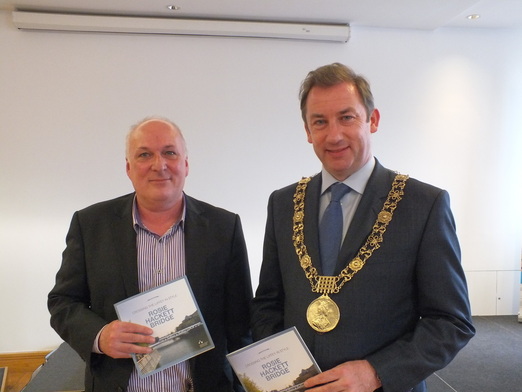
Friday 9th May
At an event which took place in the Dublin City Library and Archive on Pearse Street, the nominees for the new Liffey Bridge name were honoured. The Lord Mayor of Dublin Oisín Quinn told the assembled that there were 85 nominations which were eventually narrowed to five and eventually down to one and Rosie Hackett was the choice of the City Council.
Councillor Dermot Lacey who is the chairman of the commemorative naming committee of Dublin City Council described in detail the process used for the selection. He also explained the uniqueness of the process and this is detailed in the commemorative booklet.
Dublin City Library and Archive has published a 25 page booklet called “Crossing the Liffey in Style” Rosie Hackett Bridge. This publication is available free at any Dublin City Library, and is a great keepsake of this important new historic Liffey Bridge.
A new song entitled “Meet you at the Rosie” has been written Councillor Dermot Lacey for the occasion of the opening of the Bridge by the Lord Mayor of Dublin on 20th May 2014. The song can be downloaded on ITunes and all the proceeds will be donated to Alone an organisation which was founded by Dublin Firefighter Willie Birmingham.
Family and friend from the five people shortlisted gathered to honour their nomination and Rosie Hackett was well represented. The five final nominated people were Kay Mills, Willie Bermingham, Bram Stoker, Frank Duff and Rosie Hackett.
At an event which took place in the Dublin City Library and Archive on Pearse Street, the nominees for the new Liffey Bridge name were honoured. The Lord Mayor of Dublin Oisín Quinn told the assembled that there were 85 nominations which were eventually narrowed to five and eventually down to one and Rosie Hackett was the choice of the City Council.
Councillor Dermot Lacey who is the chairman of the commemorative naming committee of Dublin City Council described in detail the process used for the selection. He also explained the uniqueness of the process and this is detailed in the commemorative booklet.
Dublin City Library and Archive has published a 25 page booklet called “Crossing the Liffey in Style” Rosie Hackett Bridge. This publication is available free at any Dublin City Library, and is a great keepsake of this important new historic Liffey Bridge.
A new song entitled “Meet you at the Rosie” has been written Councillor Dermot Lacey for the occasion of the opening of the Bridge by the Lord Mayor of Dublin on 20th May 2014. The song can be downloaded on ITunes and all the proceeds will be donated to Alone an organisation which was founded by Dublin Firefighter Willie Birmingham.
Family and friend from the five people shortlisted gathered to honour their nomination and Rosie Hackett was well represented. The five final nominated people were Kay Mills, Willie Bermingham, Bram Stoker, Frank Duff and Rosie Hackett.
